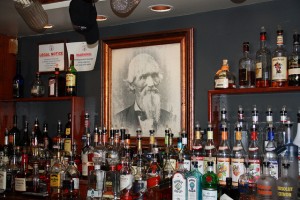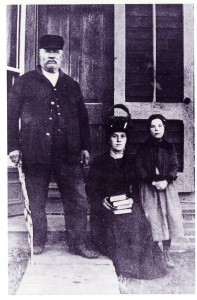The Catholic University of America (CUA) did not yet exist during the time of the Civil War (1861-1865). However, the land that would eventually house CUA and the surrounding Brookland community experienced some of the war’s bitterness, though thankfully little in the way of bloodshed.

On the northern end of the present CUA campus behind Marist Hall, on a knoll covered with trees lies the remains of the Civil War era Fort Slemmer, featured as a key part of CUA’s Historic Walking Tour.
The fort was part of the northern flank of a complex system of fortifications to defend the nation’s capital from Confederate attack (for more information see National Park Service site).
The small fort, with only four guns, was built by the 2nd Pennsylvania Heavy Artillery Regiment and named for Lt. Adam Slemmer, a Pennsylvanian noted for his brave service at Fort Pickins in Florida. When Union forces cleared the trees from the Slemmer site they could literally see to the Potomac! Their strategy was to issue early warnings and to muster troops as quickly as possible. Only one of the sixty-eight fortifications actually saw battle, Fort Stevens, two miles away in what is now the Northwest DC neighborhood of Brightwood, and where President Lincoln famously came under fire.

Relationships between Union forces and landowners were not always harmonious. Area residents such as Colonel Jehiel Brooks (1797-1886) not only had their land seized but also had to contend with rowdy soldiers living nearby. Brooks, a veteran of the War of 1812, had come to the District to secure political office, but with the exception of an appointment in the Red River Indian Agency in Louisiana during the administration of Andrew Jackson (1829-1837), he had little luck. Instead, he assumed the role of the gentleman farmer and eventual Confederate sympathizer. He was married to Margaret Queen, a daughter of Nicholas Queen, one of the largest holders of real estate in the District and running the Queen’s Hotel near the Capitol until his death in 1850. The Archives at CUA holds the Brooks-Queen Family Collection, which has an online digital version.

On a personal note, imagine my surprise when finding out, after several years working at CUA, that my great great grandfather, Peter J. Krise (1833-1903), a Catholic of Anglo-Swiss ancestry from Cambria County, Pennsylvania, served in the 2nd Pennsylvania near the very spot where I am writing this blog entry! He almost died from dysentery after the regiment was transferred to serve as infantry (or cannon fodder) in the epic and bloody siege of Petersburg, Virginia, 1864-1865, the battle that finally broke the Confederacy.
The record of the past dies,
For those unwilling to see,
Path that behind them lies,
Foreshadowing things to be,
To those with discerning eyes.
For more general information on American Catholics and the Civil War see the Acton Institute site and CUA alum Pat McNamara’s YouTube video. For more on Fort Slemmer see also Robert Malesky’s Bygone Brookland blog post.
